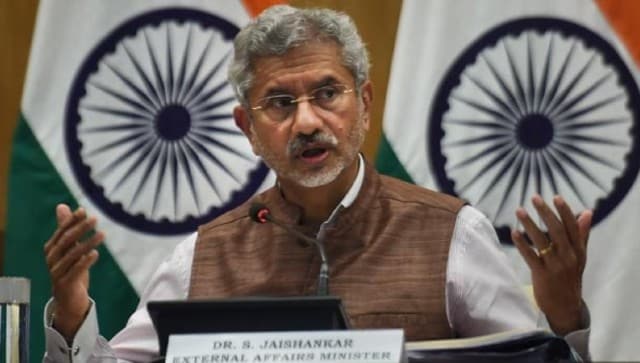Jeff Bezos' space trip: How far Amazon boss is going, how he'll get back and how safe it is
The Amazon boss' trip comes at a time when enthusiasm and interest around spaceflight is higher than it has ever arguably been

Amazon founder Jeff Bezos. Image: AP
More than 20,000 people have signed a petition to stop Jeff Bezos from reentering Earth after he touches suborbital space on a rocket created by his Blue Origin company. The petitioners have aired some theories with pop culture links, the Amazon boss is said to actually be a comic book villain, to argue that once out of Earth, Bezos should stay there.
While the petition is unlikely to trigger any action to keep one of the world's richest men in space forever, experts point out that human space flight is an inherently risky business and there are many details that need to be kept in mind for the safety of passengers.
How far is Bezos going?
Space flight conjures up visions of intergalactic distances and cryogenic suits, but as missions into the great unknown go, Bezos will literally be hovering within visual range. The Blue Origin's New Shepard rocket will be taking the space capsule carrying Bezos and company to the point where Earth's atmosphere ends and space begins. About 100 km above you when you look up, it is a spot where the travellers will be able to see the Earth's curvature and, as the module manoeuvres its way back to land, fleetingly experience weightlessness.
As million-dollar journeys go, the experience will last all of 11 minutes, the company says.
How will he get back?
On board the same capsule on which he embarks on the trip. Once it reaches the edge of space, the New Shepard rocket and capsule will separate and the rocket, being a reusable one, will drop back to Earth and using thrusters and onboard computers will execute a landing back at a designated site. The capsule will hover for a few moments at the top of its trajectory before it too begins its descent to Earth. For that it will employ parachutes that will slow down the fall.
How safe is it?
According to Blue Origin, the New Shepard rocket and its redundant safety systems have been in testing since 2012 and conducted 15 successful consecutive missions. But what Bezos, his brother Mark and two yet unnamed co-passengers are doing essentially amounts to a first for the space flight system because it has never had human passengers before.
But for Blue Origin staff, it's their boss travelling and so it can be expected that all attention is being given to every last detail. Spelling out some of the safety systems, the company says that New Shepard comes equipped with a crew escape system that pushes the capsule away from the booster, that is, the rocket, "in the unlikely event an issue is detected".
The escape system has "been tested three times successfully from the launch pad, mid-flight, and in the vacuum of space, demonstrating the system can activate safely in any phase of flight". Then, there is the landing system, which has been designed keeping in mind several redundancies. The bottom of the capsule has a retro-thrust system that ensures that it lands at just 1.6 kmph. Also, the capsule can land with two of its three parachutes out.
The height Bezos is travelling to is, of course, not hospitable for humans, but the capsule is a pressurised one and the company may not even need to wear masks and spacesuits. However, there will be no pilot on board in case the travellers want to check something because the capsule is fully automated.
But isn't reentry tricky?
You may remember the space shuttle Columbia disaster of 2003 in which all seven people on board died, including Indian-origin astronaut Kalpana Chawla. But that was an instance of a low-Earth orbital spacecraft reentering Earth. Orbital aircraft, US space agency NASA says, can hit speeds of up to 28,000 kmph as they reenter Earth's orbit. At those speeds, friction with atmospheric particles can generate massive heat while strong shock waves are triggered on the lower surface of the spacecraft.
However, the New Shepard is a suborbital spacecraft and will not require the astronomical velocity of orbital rockets. The rocket will touch a maximum of 3,700 kmph and the lower speed means less heating and less G-force exerted on the craft.
But Bezos's trip also comes at a time when enthusiasm and interest around spaceflight is higher than it has ever arguably been. The Amazon chief can look to fellow billionaires Elon Musk and Richard Branson who too are driving projects to reduce the distance between humans and space.
also read

Explained: Why Bengal govt is whisking away thousands from their homes on two Sundarbans islands
Residents of Ghoramara and Mousuni are being being moved to safety by the West Bengal government as tidal waters and rainfall pose grave risk to their lives

S Jaishankar's trip to Kuwait crucial, but New Delhi must not take its eye off renewed Saudi-Pakistan ties
But through the bonhomie, India would do well to keep one eye firmly on another partner in West Asia with whom it has enjoyed cordial ties largely based on its energy requirements: Saudi Arabia

Unseen Warriors of COVID: Forced to beg for our rights, say Hyderabad's ASHA workers
Frontline and healthcare workers were assigned additional duties to help manage the public health emergency. But while the number of tasks expected of ASHAs kept increasing, the protective gear dwindled